What is the highest rank in martial arts?
The drop out rate in martial arts is quite high: individuals may become injured and no longer able to practice; they may lose interest or other commitments interfere with regular training. Whatever the reason, very few individuals end up obtaining the coveted black belt (or dan grade). Those that attain this level have shown a level of dedication and expertise that few individuals possess.
However, the black belt is only the beginning of the martial arts journey. Its possession typically signifies that the individual has learned the basics of their particular style. There are further steps to climb before the individual can call themselves an expert or grandmaster.
In this article, I look into the senior ranking system used in most martial arts.
History of Dan Ranking
The black belt grading system used in most martial arts consists of a series of Dan grades.
Sho Dan or 1st Dan
Ni Dan or 2nd Dan
San Dan or 3rd Dan
Yon Dan or 4th Dan
Go Dan or 5th Dan
Roku Dan or 6th Dan.
Schichi Dan or 7th Dan
Hachi Dan or 8th Dan
Ku Dan or 9th Dan
Ju Dan or 10th Dan
The actual dan ranking system was devised by ,Hon’inbō Dōsaku (1645–1702) and applied to Go, a board game popular in the Far East.
It was transferred to the martial arts by Kanō Jigorō (1860–1938), the founder of judo.
He started the ranking system when, in 1883, he awarded two of his students the rank of Shodan.
Prior to the introduction of grades, most martial art schools awarded progress with special licences or scolls.
It was only in 1886 that Kano introduced the black belt for his senior students to wear. Beginners continued to wear white belts symbolising purity and simplicity, whilst the black belt represented being filled with knowledge.
In 1907, Kano devised the modern white training trousers and jacket (keikogi) that we see today. Prior to this they used to practice in kimono.
In 1935, Mikonosuke Kawaishi, began to teach Judo in Paris and introduced additional colors for the beginner grades primarily as a means to maintain motivation by providing a visible reward as the student progressed.
This more elaborate coloured belt system has been adopted by most martial arts, although the colours used varies.
Some martial arts use a red belt to signify that the holder has reached ninth or tenth dan grades. The most notable are BJJ, Judo and Okinawan Karate.
Promotion within martial arts
The exact criteria for promotion from each dan grade will vary between different styles of martial art. It will typically be the instructor or Sensei who will determine which of his students has the technical and conceptual knowledge to be ready to progress.
Grading will typically involved some form of formal testing during which the practitioner will demonstrate their competence in performing set techniques Depending of the martial art, it may also involve the performance of particular kata or fighting with a resisting opponent. Formal testing may require the payment of testing fees.
In some martial arts, participating in competition is a required in order to progress to the next grade.
Martial Art Grandmasters
Outlined below are a number of martial art grand masters.
BJJ
The Gracie brothers, who pioneered this art, are the only holders of the 10th degree red belt:
Carlos Gracie – (1902–94) was taught judo by Otávio Mitsuyo Maeda, a Japanese emigrant to Brazill, and later adapted the style to form what is now Brazilian Jiu-Jitsu Carlos then taught his brothers: Oswaldo, Gastão Jr., Jorge, and Hélio.
The first BJJ academy was opened in 1925, marking the start of this martial art.
Taekwondo
 Haeng Ung Lee (1936 – 2000) – Founded the American Taekwondo Association;
Haeng Ung Lee (1936 – 2000) – Founded the American Taekwondo Association;
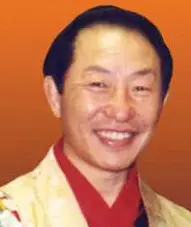 Joon Choi (1950 – ) – in 1988 he was the American National Team Coach for the Seoul Olympics. At this event, the Men’s team placed 2nd and the Women’s team placed 1st.
Joon Choi (1950 – ) – in 1988 he was the American National Team Coach for the Seoul Olympics. At this event, the Men’s team placed 2nd and the Women’s team placed 1st.
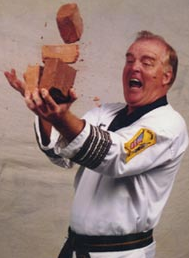 Edward Sell (1942 – 2014) – He was the highest non-oriental taekwondo practitioner in the world.
Edward Sell (1942 – 2014) – He was the highest non-oriental taekwondo practitioner in the world.
Judo
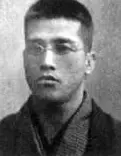 Yoshitsugu Yamashita (1865–1935) – he was the first person ever awarded 10th dan by the Kōdōkan. He also pioneered judo in the United States, and even taught President Theodore Roosevelt.
Yoshitsugu Yamashita (1865–1935) – he was the first person ever awarded 10th dan by the Kōdōkan. He also pioneered judo in the United States, and even taught President Theodore Roosevelt.
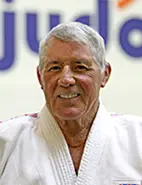 Charlie Palmer (1930–2001) – a British citizen and the first non-Japanese to be the President of the International Judo Federation.
Charlie Palmer (1930–2001) – a British citizen and the first non-Japanese to be the President of the International Judo Federation.
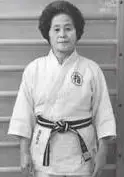 Keiko Fukuda (1913–2013) – the first of three women to be promoted to 6th dan after an apparent ‘glass ceiling’ was removed in 1972.
Keiko Fukuda (1913–2013) – the first of three women to be promoted to 6th dan after an apparent ‘glass ceiling’ was removed in 1972.
Karate
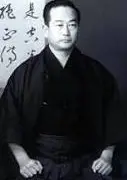 Shihan Masatoshi Nakayama – (1913 – 1987) – born into a samurai family, he is perhaps the most famous practitioner to have trained directly under Gichin Funakoshi, the founder of karate. He helped establish the Japanese Karate Association (JKA) and was instrumental in the decision to send instructors overseas in the 1960’s to spread the awareness of Shotokan Karate.
Shihan Masatoshi Nakayama – (1913 – 1987) – born into a samurai family, he is perhaps the most famous practitioner to have trained directly under Gichin Funakoshi, the founder of karate. He helped establish the Japanese Karate Association (JKA) and was instrumental in the decision to send instructors overseas in the 1960’s to spread the awareness of Shotokan Karate.
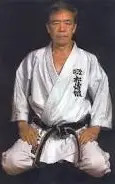 Shihan Hirokazu Kanazawa (1931 – ) – he was a direct student of Sensei Masatoshi Nakayama, and in 1957 won the “All Japan Karate Championships”. In 1977, he left the JKA and formed his own organization: the Shotokan Karate International Federation (SKIF). He is currently the only living Shotokan Master to currently hold the rank of 10th Dan.
Shihan Hirokazu Kanazawa (1931 – ) – he was a direct student of Sensei Masatoshi Nakayama, and in 1957 won the “All Japan Karate Championships”. In 1977, he left the JKA and formed his own organization: the Shotokan Karate International Federation (SKIF). He is currently the only living Shotokan Master to currently hold the rank of 10th Dan.
Hopefully this article has given you an insight into the highest ranks in the martial arts and an awareness of those practitioners who had truly mastered their art.
Happy training!


 Haeng Ung Lee (1936 – 2000) – Founded the American Taekwondo Association;
Haeng Ung Lee (1936 – 2000) – Founded the American Taekwondo Association;  Joon Choi (1950 – ) – in 1988 he was the American National Team Coach for the Seoul Olympics. At this event, the Men’s team placed 2nd and the Women’s team placed 1st.
Joon Choi (1950 – ) – in 1988 he was the American National Team Coach for the Seoul Olympics. At this event, the Men’s team placed 2nd and the Women’s team placed 1st. Edward Sell (1942 – 2014) – He was the highest non-oriental taekwondo practitioner in the world.
Edward Sell (1942 – 2014) – He was the highest non-oriental taekwondo practitioner in the world. Yoshitsugu Yamashita (1865–1935) – he was the first person ever awarded 10th dan by the Kōdōkan. He also pioneered judo in the United States, and even taught President Theodore Roosevelt.
Yoshitsugu Yamashita (1865–1935) – he was the first person ever awarded 10th dan by the Kōdōkan. He also pioneered judo in the United States, and even taught President Theodore Roosevelt. Charlie Palmer (1930–2001) – a British citizen and the first non-Japanese to be the President of the International Judo Federation.
Charlie Palmer (1930–2001) – a British citizen and the first non-Japanese to be the President of the International Judo Federation. Keiko Fukuda (1913–2013) – the first of three women to be promoted to 6th dan after an apparent ‘glass ceiling’ was removed in 1972.
Keiko Fukuda (1913–2013) – the first of three women to be promoted to 6th dan after an apparent ‘glass ceiling’ was removed in 1972. Shihan Masatoshi Nakayama –
Shihan Masatoshi Nakayama –  Shihan Hirokazu Kanazawa (1931 – ) –
Shihan Hirokazu Kanazawa (1931 – ) –